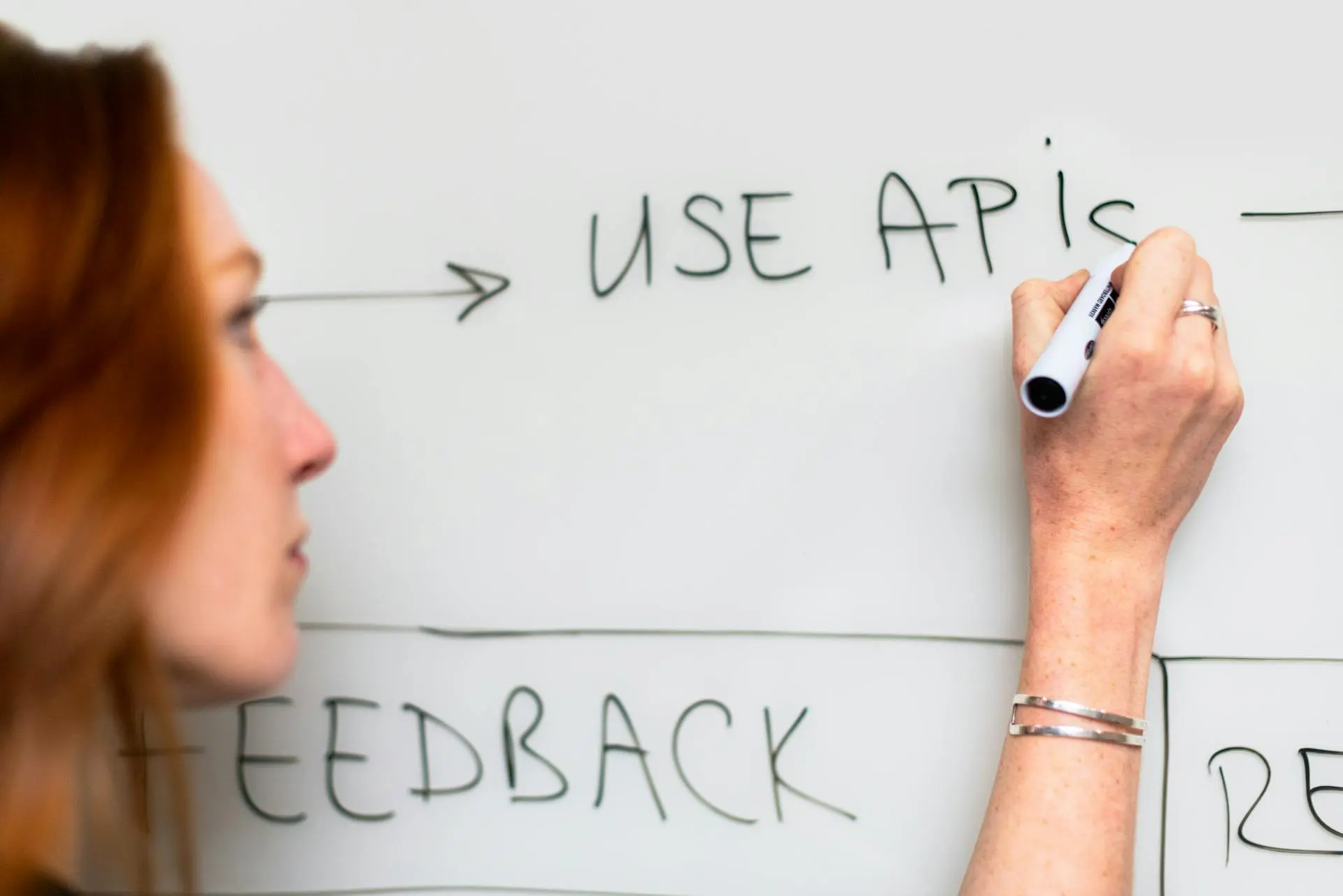
Apification, driving change in application modernization
June 11, 2024
Application modernization is crucial to maintaining competitiveness and driving innovation
Every day, many of them face the challenge of adapting their applications and legacy infrastructures to current demands, or they try to create their project from scratch within a modern environment.
In either context, apification stands out as a fundamental strategic approach and an indispensable tool for streamlining processes, simplifying service development, and creating new business models.
What is apification?
Before defining this concept, I think it's necessary to clarify what an API is. Surely, these initials already have meaning for most people reading this post, but it never hurts to review.
An API (Application Programming Interface), in simple terms, is a set of definitions and protocols that facilitates the integration of different software entities, allowing their functionalities to be reused by any of them. APIs help extract, process, and publish valuable data securely, hide the complexity of implementation, and present a simplified interactive model to developers.
On the other hand, apification is nothing more than the term used to describe the transformation of processes and services into components accessible via API, with the clear goal of improving interoperability, optimizing resource utilization, driving innovation, enhancing the customer experience, and creating new business opportunities.
How does apification contribute to application modernization?
Apification offers various benefits that make it an essential ally in application modernization processes:
1. Greater agility and flexibility
APIs allow breaking down monolithic applications into smaller, more manageable microservices, facilitating the implementation of changes and adaptation to new business needs more quickly and efficiently.
This breakdown optimizes agility and scalability, enabling development teams to work on independent components and deploy them autonomously, reducing delivery time and improving responsiveness to changes in the market or customer requirements.
2. Better integration
Apification facilitates the integration of existing applications with new systems and external environments to the organization, enabling the creation of more complete and connected digital ecosystems.
This improves collaboration and operational efficiency by facilitating smoother communication and collaboration between different applications and services, better leveraging available data and resources, and quickly adapting to new business demands.
3. Accelerated innovation
Exposing application capabilities to external developers promotes the creation of new products, services, and digital experiences, driving innovation and opening up new business opportunities.
By allowing third parties to access and use application functionalities through APIs, companies can harness external creativity and resources, as well as expand their solution ecosystem.
4. Enhanced user experience
APIs enable the creation of more modern and personalized user interfaces by providing greater freedom, allowing development teams to offer richer user experiences (UX) tailored to changing user expectations.
Moreover, they ensure a consistent user experience across different devices and platforms, and help integrate advanced features such as artificial intelligence and augmented reality, significantly enhancing user interaction and satisfaction.
5. Greater scalability
APIs facilitate application scaling to meet fluctuating demands efficiently, allowing companies to adapt to rapid growth without compromising performance.
By breaking down applications into microservices and enabling communication between them, APIs ensure that each component can scale independently as needed, optimizing resources and maintaining high availability and operational efficiency during peak demand.

Key strategies for apification
To maximize the potential of apification in application modernization, it is crucial to follow well-defined and detailed strategies that enable effective and sustainable implementation.
This involves establishing specific and measurable goals for the creation and use of APIs, which must be prioritized according to the business value they bring, considering factors such as market demand, operational efficiency improvement, and the ability to enable new business opportunities.
Adopting a developer-centric design approach is another fundamental pillar. APIs should be intuitive and easy to use, requiring comprehensive and accessible documentation. A well-designed API reduces friction for developers, both internal and external, allowing them to integrate and use them more efficiently and effectively. This not only accelerates application development but also fosters greater adoption and satisfaction among users.
Implementing a robust API management platform is crucial for the efficient management of its lifecycle. An adequate solution provides tools for managing security, version control, access, and usage analysis. These capabilities are essential for maintaining the integrity and reliability of APIs, as well as facilitating continuous monitoring and optimization.
API security cannot be underestimated either. It is essential to implement robust measures to protect both APIs and the data they expose. This includes appropriate authentication and authorization, data encryption, and protection against common threats such as injection attacks and unauthorized access. A proactive approach to security helps prevent breaches and maintain user trust.
Finally, monitoring and measuring the performance of APIs are vital for their continuous improvement. This involves not only monitoring technical performance, such as latency and uptime but also collecting feedback from developers using the APIs. These insights are valuable for identifying areas for improvement and ensuring that they remain useful and relevant.
API Management with Apigee: Unparalleled Scalability, Security, and Performance
Apigee is a native Google Cloud management tool for creating, managing, and securing APIs, regardless of their use, environment, or scale. Whether you're developing cloud-first applications, modernizing legacy systems, or maintaining mixed infrastructures, Apigee has got you covered.
Let's explore some of the significant advantages Apigee brings to the table:
1. API Enablement
With Apigee, you can expose functionalities of legacy systems as APIs, essential for connecting modern applications with older systems. By providing a standardized interface, Apigee makes data and service access and consumption seamless, regardless of the underlying technology.
2. Legacy System Integration
Modernization doesn't mean discarding legacy systems entirely. Apigee acts as a bridge, enabling the coexistence of technologies. It seamlessly connects modern applications with legacy systems, ensuring a smooth transition and greater flexibility.
3. Simplification of Microservices
Microservices architecture is crucial for modernization, and Apigee provides a unified communication layer for managing APIs. This enhances interaction between microservices and simplifies monitoring and security.
4. Enhanced Security
Security is paramount in any modernization effort, and Apigee offers robust authentication, authorization, and encryption features. Regular assessments of managed APIs identify proxies not meeting security standards, with recommended actions provided. Additionally, its machine learning-based dashboards accurately pinpoint improper API usage, significantly reducing incident management time.
5. Traffic Management and Scalability
Apigee streamlines traffic management, allowing you to limit speed, implement caching, and balance loads for optimal performance. Moreover, scaling modernized applications becomes more straightforward with these tools.
6. Data-Driven Decision Making with Analytics
Apigee offers comprehensive analytics to understand API usage thoroughly. It identifies bottlenecks, usage patterns, and optimization opportunities, informing your decisions during modernization.
7. Developer Facilities
Apigee's developer portals provide API documentation, testing, and resources, fostering collaboration and API adoption, thereby accelerating modernization efforts.
In summary, Apigee not only manages APIs but also drives modernization by bridging legacy systems with modern applications. Its versatility, security, and analytical capabilities make it an essential ally for your company's application modernization journey.
Guiding Modernization in Major Projects
Modernizing significant projects and subsequent apification is a complex process requiring careful planning and execution for success. However, many projects face challenges that can slow or halt their progress. Expert guidance can be crucial in overcoming modernization challenges.
It's not just about addressing technical complexities but also managing cultural change and training teams to adapt to new technologies and processes. At SNGULAR, we've guided many companies on their path to modernization, giving us firsthand knowledge of what works and what doesn't.
Our experience has taught us that the most important thing is to ensure our clients feel secure and confident throughout the process, ensuring business continuity and minimizing the risk of stagnation.
If you're ready to take the leap into modernization, we invite you to discuss your technical and operational needs with us. We're here to listen and explore how we can help you achieve your goals. Click here for more information on our modernization services and to get in touch with us. Don't hesitate to contact us to start modernizing your company with confidence!
Our latest news
Interested in learning more about how we are constantly adapting to the new digital frontier?

Tech Insight
January 13, 2025
How to bring your application closer to everyone

Tech Insight
December 19, 2024
Contract Testing with Pact - The final cheetsheet

Insight
December 18, 2024
Agility, Complexity and Empirical Method

Tech Insight
December 17, 2024
Google’s new quantum processor is here, but what does it really mean?
